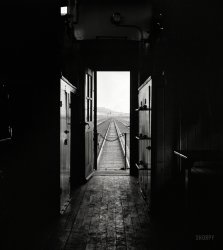
MAY CONTAIN NUTS

Search Shorpy
SHORPY ART

Framed or unframed, desk size to sofa size, printed by us in Arizona and Alabama since 2007. Explore now.
Join and Share
Ad-Free Shorpy
Shorpy is funded by you. Patreon contributors get an ad-free experience.
Learn more.

Recent comments
- No Detroit subway, alas
- 77 Sunset ...
- Apparently poker
- Subway construction?
- Willa Cather
- Telling this with a sigh
- I like poetry and friction, too
- I hope he really loved that car
- If I'd known a photographer was going to show up
- Preference
- The consul from Helsinki, perhaps?
- Self-Conscious About Injuries
- Battle Stations
- When Dinosaurs roamed the Earth
- Holding up pretty well ...
- Typewriter model
- It would appear
- Future forms
- Long Form
- Location
- Totally tuba-ular!
- What's in a name?
- Job prospects, with an asterisk
- Yeah, Me Too!
- Go ahead and try
- Tough neighborhood
- Scofflaw
- Hairdo
- Kahn!!!
- False Front
Member Photos
The Shorpy
Print Emporium
Print Emporium
Search Shorpy
Search results -- 30 results per page
- Central Union Station: 1905
- ... and glee.
(The Gallery, Cincinnati Photos, DPC, Railroads, Streetcars) ... Posted by Dave - 08/12/2012 - 3:11pm -
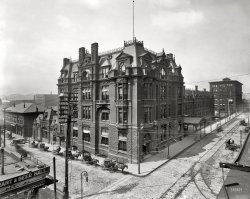
- Heaven and El: 1905
- ... down in the late 1980's.
(The Gallery, Boston, DPC, Railroads) ... Posted by Dave - 08/06/2017 - 8:54am -
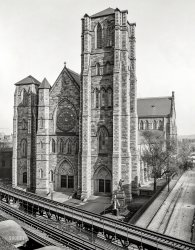
- Chicago: 1956
- ...
(ShorpyBlog, The Gallery, Chicago, Kermy Kodachromes, Railroads) ... Posted by Dave - 01/19/2013 - 9:20pm -
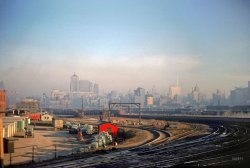
- Shutterbug Special: 1900
- ... in reverse on half of the trips.
(The Gallery, DPC, Railroads) ... Posted by Dave - 06/25/2017 - 9:20pm -
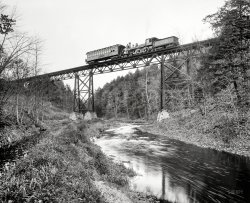
- Columbus Revisited: 1910
- ... at the top are twine cutters.
(The Gallery, DPC, Railroads, Streetcars) ... Posted by Dave - 10/14/2013 - 11:41am -
![Columbus Revisited: 1910 Circa 1910. "Union Station, Columbus, Ohio." Your headquarters for the Garden City Self Feeder, whatever that is. Continuing our tour of Columbus on Columbus Day. 8x10 glass negative, Detroit Publishing Co. View full size.
Many mysteriesStreetcar 232 has a sign that says "THIS CAR --- FARE" (possibly X PENNY). Wonder what was special about it. (309 has a similar sign but it's harder to read.) Down the street, the B. is being welcomed... wonder who that was.
["This car ... Olentangy Park." -tterrace]
1897 - 1979Built in 1897, demolished 1979. The arch from the station was placed in Arch Park, between Nationwide Boulevard and Spring Street.
Gone Baby GoneFrom 112 trains per day in 1893 to 42 trains per day in 1956 to 10 per day in 1970 to no train service in Columbus at all today. All that remains of this magnificent station designed by Daniel Burnham & Company is seen below.
The FacadeWhat you see here is not the station itself, but a structure known as "The Façade" that was built on the north side of the High Street Viaduct over the tracks. The station itself actually sat on the south side of the tracks, between High Street and 3rd Street.
Garden City Self FeederYou've clearly let your subscription to Threshermen's Review lapse.
Self FeederA similar self feeder at work, mounted on a threshing machine.
http://youtu.be/BaZcABBqmcY
Feeders were aftermarket attachments for threshing machines, along with stackers to pile up the straw and weighers to allow a custom thresher to bill the farmer by the bushel. A stacker was either a chain conveyor, or a "windstacker", a centrifugal blower to send the straw out a long steerable spout.
The arms flailing at the top are twine cutters.
(The Gallery, DPC, Railroads, Streetcars)](https://www.shorpy.com/files/images/SHORPY_4a19373a.thumbnail.jpg)
- Industrial Cataract: 1905
- ... view from May of 1999.
(The Gallery, DPC, Factories, Railroads, Rochester) ... Posted by Dave - 07/28/2017 - 1:29pm -
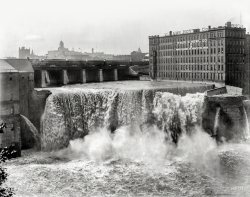
- General #3: 1964
- ... of my grandparents.
(ShorpyBlog, Member Gallery, Railroads) ... Posted by paulPaulsBest - 01/15/2010 - 9:12am -
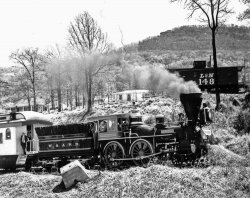
- Last Rites: 1968
- ...
(Kodachromes, Cars, Trucks, Buses, LOOK, Railroads) ... Posted by Dave - 06/15/2019 - 12:11pm -
![Last Rites: 1968 June 8, 1968. "Funeral cortege of Robert F. Kennedy." Mourners viewing RFK's funeral train as it made its way from New York to Washington after his assassination. 35mm Kodachrome from photos by Paul Fusco and Thomas Koeniges for Look magazine. View full size.
In a Prosaic Industrial Park... a piece of history passed me.
Just off North Point Blvd in Baltimore the funeral train rode by a crowd similar to the one above and because of backlighting coming through the windows I caught a glimpse of people in the car, the casket and someone bending over and looking down at it. My sister and I both believe the person bending was Robert Kennedy.
[Um, Robert Kennedy is the guy *in* the casket, so probably not! - Dave]
It's an image burned onto my retina and all I have to do to remember that moment is close my eyes and I can feel the sense of loss the whole country and that bending figure felt at the time.
(We knew who was in the casket but we both to this day think it looked like Robert Kennedy. Twilight Zone Time? Mass Hysteria? Wishful Thinking?
There is a book that collects the photos from this journeyIt's very moving. Can be found on Amazon.com and elsewhere;
RFK Funeral Train by Paul Fusco
https://www.amazon.com/RFK-Funeral-Train-Paul-Fusco/dp/1884167047
Selection of photos here, too:
https://www.magnumphotos.com/newsroom/politics/paul-fusco-rfk-funeral-tr...
(Kodachromes, Cars, Trucks, Buses, LOOK, Railroads)](https://www.shorpy.com/files/images/SHORPY-11741u.thumbnail.jpg)
- Bergen Tunnel: 1900
- ... added to NJ Transit’s fleet."
(The Gallery, DPC, Railroads) ... Posted by Dave - 07/19/2012 - 12:54pm -
![Bergen Tunnel: 1900 New Jersey circa 1900. "Bergen Tunnel, east end." The Detroit Photographic Special on the tracks. 8x10 inch dry plate glass negative. View full size.
Tunnel VisionHere it is today:
Bergen Tunnel Accident
AboutBergen Tunnel Accident
About twenty years ago, I worked a car fire in that tunnel, as a member of an EMS crew. Most of the passengers were able to walk up the emergency stairs near the Lincoln Tunnel, but there were a few that were injured. We waited in the area where that work shack is in the picture. We transported them as they were brought out on a diesel engine, the power was off in that tube. The other tracks were not closed and the trains came through at speed.
It has not changed all that much since that picture. There is a second tube and it is all electrified now.
Tunnel viewsre: LouK's comment: it's surprising that NJ Transit (the operator since 1983,) let the trains run through at speed while you were evacuating passengers.
Shorpy has a beautiful view of this same train movement at the east end of the Manunka Chunk tunnel. Of interest to railfans only: that car, lettered Lackawanna, has M&E in small letters for Morris & Essex.
Silly me!All this time, I thought the DPC Special ran at the end of a regular train, like most private cars. But that would have precluded stopping at will when the light was right or the inspiration struck.
Forget about having to develop your own glass plates! Imagine not being able to pull over to the side at will when you see a good shot! (Unless, like Detroit Publishing, you had the resources to lease your own 4-4-0 American, complete with crew. And possibly [??] signal priority!)
ConductorI know a conductor had other jobs on a train, but I wonder how often he walked through the car and checked Mr. Jackson's ticket?
Bergen Tunnel a.k.a. Lackawanna Tunnel?This "Bergen Tunnel" seems also been called the "Lackawanna Tunnel?" Or is that a mistake, I could find no other source than the caption of the postcard in the link.
I wondered why the portal to the, older, North tube looks so new in the "Tunnel Vision" photo from bluegrassboy, that is because this tunnel has rather recently (starting june 2001) been reconstructed during a performed "rehabilitation program," in order to solve a water leakage problem. If you look carefully you will see that the height has been altered too. That is because:
"It was also essential to improve the vertical clearance in the North Tube to garner a larger air gap between the electrified catenary system and the structure ceiling as well as to accommodate the new double deck passenger cars that [were] being added to NJ Transit’s fleet."
(The Gallery, DPC, Railroads)](https://www.shorpy.com/files/images/SHORPY_4a07220a.thumbnail.jpg)
- Tunnel Vision: 1910
- ... are canines.
(The Gallery, Detroit Photos, DPC, Railroads) ... Posted by Dave - 10/24/2012 - 10:40am -
![Tunnel Vision: 1910 Detroit circa 1910. "Michigan Central Railroad tunnel." Another view of the electrified tracks going under the Detroit River. View full size.
Mystery pipesDoes anyone know for sure what those vertical "pipes" were, that hang from either side of the bridge from the overhead cable? My guess would be that it is some sort of "low clearance" warning system to protect obstructions on the bridge from high trucks or trains.
[The obstructions don't need protecting. The telltales are there to protect you, if you're a brakeman, from the obstructions. -Dave]
Tell-TaleThe standard tell-tale design had ropes on 3" centers for a width of 8 feet over the track, the bottoms of the ropes 6" lower than the height of the obstruction and placed 100 feet before the obstruction. Today trains do not have walkways on top of the cars or means to get to the roof.
Dental WorkBrace yourself. Not only do we have the route canal going into the cavity under the river, but this image is crowned with bridge work going on a bit right of center. At least the debris and powder that was gumming up the tracks below the crest in a previous Shorpy post has been cleaned up. About the only thing missing are canines.
(The Gallery, Detroit Photos, DPC, Railroads)](https://www.shorpy.com/files/images/SHORPY_4a19899a.thumbnail.jpg)
- Shipshape: 1906
- ... dock.
(The Gallery, Boats & Bridges, DPC, Factories, Railroads) ... Posted by Dave - 08/14/2012 - 12:33pm -
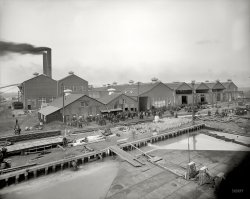
- Central City: 1941
- ... There could be some variation of signals on different railroads, but this is typical.
Just as the locomotive was left for ...
(The Gallery, Frontier Life, M.P. Wolcott, Mining, Railroads, Small Towns) ... Posted by Dave - 11/16/2019 - 1:08pm -
![Central City: 1941 September 1941. "Central City, an old mining town. Mountainous region of Central Colorado, west of Denver." Medium format acetate negative by Marion Post Wolcott. View full size.
The back way into townThis is the view coming into Central City via Virginia Canyon Road, known to locals as "Oh-My-God Road." It's a narrow, winding, unpaved road from Idaho Springs, and until a little over a decade ago it was the only access to Central City that didn't require going through the neighboring town of Black Hawk. Gambling interests, which wanted visitors to Central City not to be distracted by the larger competing casinos in Black Hawk, drove construction of the absurdly oversized yet still very steep "Central City Parkway." That road now provides a "direct" route from I-70 when not closed due to rockslides or washouts.
Centered on Central
Tantalising glimpseThe locomotive peeping around the corner of the building is a bit of a tease, I wonder if Marion covered it in another photo?
[Stay tuned! - Dave]
Not exactly Penn StationThe two red brick buildings to the immediate right were station facilities for the Colorado & Southern Railway branch to Central City from Black Hawk. In the vintage photo, note the nose of a C&S locomotive peeking around the corner of the depot. Look about halfway up the distant hillside to see the former right of way. This branch was built in the late 1870s; the attraction was gold and silver mining all through this region.
By 1941, C&S Central City branch had been inactive for a number of years. I think the loco shown was left there for a display of sorts, and later moved. At about this time, C&S was in the process of closing/removing the remains of their once extensive narrow-gauge lines from the mountains.
Today's popular Georgetown Loop RR is a reconstruction of C&S Silver Plume Branch that was already gone by 1941.
End of the LineMight any of our Shorpy railroad buffs be familiar with the odd-looking signal device to the left of the apparently-shy locomotive?
Sorry, wrong odd signalOlde Buck and damspot are correct, and I am wrong. I have seen switch targets like this, and I even made a model station with this style of "order board". My bad.
"Odd" signal deviceAnswer to Doubleclutchin: that is a switch stand. The target (as it is known) shows the position of the track switch, and is part of the mechanism which operates the switch. The switch (in the track) allows a train to move into one of two (usually) tracks. This switch stand would have been used on a main track so the position can be seen from a distance, telling the engineer if a slow diverging route is set, or the main high speed route. "High" speed here was probably not more than 30 or 40 miles per hour. The vertical rod rotates through ninety degrees when the switch is moved, so displaying to the engineer either square blades (perhaps painted white?) for the slow route, or the round blades (perhaps green?) for the "fast" route
I would suspect that this switch stand was moved here as part of the display. A tall switch stand is more expensive than simpler, low switch stands. Since this is the end of the line, is is not necessary to provide long distance warning of the position of the switch.
Face on the barroom floor.I do remember a saloon there touting "the face on the barroom floor." Wonder if that's still there? Really neat town when we were there in the '80s before casinos.
I found the trainRight around the corner on Gregory Street, just past the Post Office and RMO Dispensary.
Odd signalDouble clutch, that odd signal is a train order signal. Displaying white banner/white light, no orders; red means to stop, sign for and receive orders; yellow would indicate orders to pick up, stopping not necessary. There could be some variation of signals on different railroads, but this is typical.
Just as the locomotive was left for display, it is also possible that the train order signal was put up for display also. I don't know if Central City was a train order office back in the day.
The funny signalTo answer doubleclutchin's question, the object is known as an order board. The days of communicating with train crews by paper sent ahead to a telegraph operator required a way to indicate to the train's crew that there was a message (an "order") for them and to halt and receive and sign for same. The paddles were rotated one way for "proceed," and the other for "stop."
Central City, a terminus location (end of the line), would have been a required stop anyhow, so this board is just serving as an example of the object, not what would have been seen in Central at any time.
Cameo in "On the Road""Central City is an old mining town that was once called the Richest Square Mile in the World, where a veritable shelf of silver had been found by the old buzzards who roamed the hills. They grew wealthy overnight and had a beautiful little opera house built in the midst of their shacks on the steep slope. Lillian Russell had come there, and opera stars from Europe. Then Central City became a ghost town, till the energetic Chamber of Commerce types of the new West decided to revive the place. They polished up the opera house, and every summer stars from the Metropolitan came out and performed. It was a big vacation for everybody. Tourists came from everywhere, even Hollywood stars."
Jack Kerouac, "On the Road", Chapter 9
Slip n SlideI'll bet that road into town was one wild ride in the winter when that road was wet and muddy. I wonder how many times those buildings at the bottom of the hill were slid into?
(The Gallery, Frontier Life, M.P. Wolcott, Mining, Railroads, Small Towns)](https://www.shorpy.com/files/images/SHORPY-8c16320a.thumbnail.jpg)
- Stove-Cam: 1901
- ... or what?
(The Gallery, DPC, Glazier Stove Works, Railroads) ... Posted by Dave - 04/28/2014 - 11:06am -
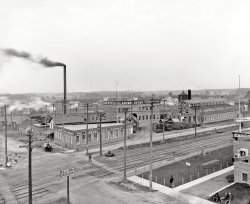
- Above It All: 1908
- ... only medium-Gentile. - Dave]
(The Gallery, DPC, NYC, Railroads) ... Posted by Dave - 08/15/2012 - 4:15pm -
![Above It All: 1908 New York circa 1908. "Morningside Park and elevated line." Another view of the "L" seen here a few days ago. 8x10 inch glass negative. View full size.
The Block HouseThat's Central Park in the background there and the structure just left of center peeking up through the trees is the Block House.
From Morningside Park to Central ParkAfter consulting the vast riches of the Shorpy archive, I have determined that this view was taken from the grounds of St. John the Divine, looking southeast across Morningside Park toward Cathedral Parkway (110th Street) and the north end of Central Park. The apartment buildings along Manhattan Avenue (at the left) are still there, except for the one closest to the L tracks. Of the three buildings on the other side of the tracks (south side of 110th St.), only the middle one has been replaced. Thanks, Dave, this has been loads of fun!
"722 Miles" -- recommendedIf anyone has access to a copy of the book "722 Miles: The Building of the Subways and How They Transformed New York." I think there is a picture of this curve when it was built out in farmers' fields. The book is very good at explaining how the subways, elevated railways, and street cars made possible the development of a much larger city.
A more-recent (1896) view:
A different NYCOur history books would have us believe that New York City of this time, was a seething cauldron of oppressed masses from Eastern and Southern Europe.
Yet these photos show another, more gentile atmosphere of this urban giant.
I wonder if school teachers are aware of, and make use of this website?
[This being the Upper West Side, the atmosphere was probably only medium-Gentile. - Dave]
(The Gallery, DPC, NYC, Railroads)](https://www.shorpy.com/files/images/4a23266a.thumbnail.jpg)
- Aerial Amarillo: 1943
- ... taken from.
(The Gallery, Kodachromes, Jack Delano, Railroads) ... Posted by Dave - 08/01/2012 - 1:42pm -
![Aerial Amarillo: 1943 March 1943. "Amarillo, Texas, general view, South Tyler at SW 10th Avenue -- Santa Fe R.R. trip." This is the uncropped version of a smaller image posted here five years ago. 4x5 Kodachrome by Jack Delano. View full size.
Frank's creativityHe sure comes up with some imaginative and fascinating window displays.
Academy of Music & Art"Music Dancing Expression"
I thought that was illegal in Texas.
Old Stomping GroundsI spent the first six years of my life exactly here. Fortunately not quite old enough to be seen running away from home in my pedal car in Jack's picture, but old enough that some places well-depicted in that picture are among my vivid early memories.
No A/C !As a Californian I can't imagine living there in the summer.
Dear ShorpyAfter googlemapping I found the location, the photo was taken from the Santa Fe building(now the Potter County tax office) and looks S.W. The intersection you can actually see is SW 10th Ave and S. Harrison St. At least two of the buildings are still there.
View Larger Map
Skyspotting AmarilloIt's amazing to see a vibrant mixed 1940's neighborhood and the mostly barren industrial parkingscape of today.
Still in today's picture:
Amarillo Furniture Company now ABC Blueprints
Franks now Randy's Shoes
???R-A-WAY=Blackstone Cafe/Young Sushi
Academy of Music & Art now AKA Gaylynn's Bail Bonds and others?
Texaco Station now Vacant
Blue Bird Station now Qdesignworks
??? now Computer Shop
The older St. Mary's Cathedral School buildings on the far side of Elwood Park
. . . to put up a parking lot. Comparing this photo to the current view, it's striking how completely the homes near the center of the photo have been replaced by parking lots. And in each of the aerials in Google Earth since 1995, those lots are largely free of cars and people. It would be interesting to know how much of that transformation just happened on its own, and whether it was aided by scorched-earth urban renewal practices common in the 25 years after World War II. A December 1961 news article from the Amarillo Globe Times indicates that urban renewal was hadn't really begun yet.
Two lonely people!I can find a grand total of TWO people in the whole town! One is standing next to a car at the house with the turret directly above the Conoco gas station, and the other is waiting on the corner to the right of the white building with a dome in the center of the picture.
Wood Paneled SedanI am puzzled by the wood paneled sedan at the intersection across from the Conoco station. It looks to be a 1942 Buick, but to my knowledge, they did not make a wood paneled sedan. They did make a station wagon, but no sedan.
[Looks like a taxi - tterrace]
Many buildings still there!A view from the air, today:
http://binged.it/MNr0bT
And of course, the building this shot was likely taken from.
(The Gallery, Kodachromes, Jack Delano, Railroads)](https://www.shorpy.com/files/images/SHORPY_1a34723u.thumbnail.jpg)
- Alt-Atlanta: 1938
- ... Arthur Rothstein, Cars, Trucks, Buses, Gas Stations, Railroads) ... Posted by Dave - 05/27/2015 - 10:58am -
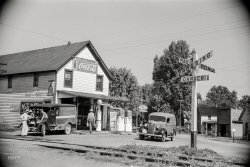
- Standard Service: 1939
- ...
(The Gallery, Arthur Rothstein, Gas Stations, Railroads, Small Towns) ... Posted by Dave - 01/14/2018 - 11:54am -
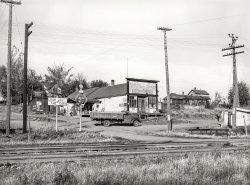
- Derailed: 1922
- ... arrangement of diagonals.
(The Gallery, Natl Photo, Railroads) ... Posted by Dave - 02/26/2008 - 6:41am -
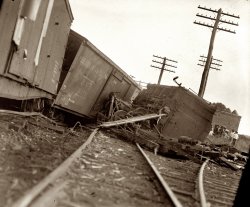
- Photographers' Special: 1904
- ... , from the other post. - Dave]
(The Gallery, DPC, Railroads) ... Posted by Dave - 02/22/2014 - 3:31pm -
![Photographers' Special: 1904 Vermont circa 1904. "Summit Cut, Green Mountains. Rutland R.R. Photographers' Special." A long shot of the engine seen here hauling a carload of shutterbugs. 8x10 inch glass negative, Detroit Photographic Company. View full size.
Excessive Engineering
Railroad Men, September, 1907.
The Bellows Falls Division extends easterly from Rutland to Bellows Falls, on the Connecticut River, 52.21 miles. Leaving Rutland, at an elevation of 566, the line climbs to Summit, at an elevation of 1,530, in about eighteen miles with a controlling grade, not compensated on four degree curves, of about seventy feet per mile. … The alignment is very uneven, the percentage of curved track is large and there are many four degree curves. One of the principal features of engineering, or the lack of engineering, on the division is the Summit cut, where the line crosses the Green Mountains in passing from the Connecticut to the Champlain Valley. This cut is in rock; it is nearly a mile long and is said to have cost one million dollars.
Thanks for the locationI tried to follow the route on google maps to no avail, I shall try again with the above information.
[There's a map here, from the other post. - Dave]
(The Gallery, DPC, Railroads)](https://www.shorpy.com/files/images/SHORPY_4a10579a.thumbnail.jpg)
- Plains Grain: 1943
- ... train coming this way.
(The Gallery, Jack Delano, Railroads, Small Towns) ... Posted by Dave - 04/09/2013 - 10:13am -
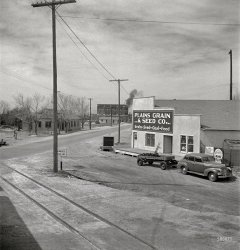
- Infrastructure: 1908
- ... top speed was barely 13 mph.
(The Gallery, DPC, NYC, Railroads) ... Posted by Dave - 08/14/2012 - 2:11pm -
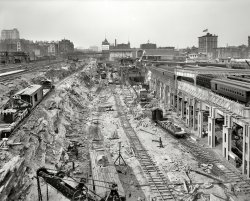
- Goggle Glass: 1942
- ... before it even existed.
(The Gallery, Jack Delano, Railroads) ... Posted by Dave - 08/30/2014 - 11:58am -
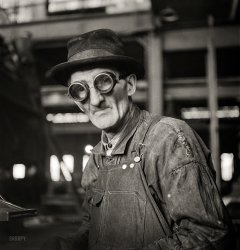
- Delaware, Lackawanna & Western: 1900
- ... Steamtown is a great place to visit!
(Panoramas, DPC, Railroads, Scranton) ... Posted by Dave - 07/28/2012 - 4:36pm -
![Delaware, Lackawanna & Western: 1900 Scranton, Pennsylvania, circa 1900. "Delaware, Lackawanna, and Western Railroad yards." Panorama of two 8x10 inch glass negatives. We've seen the left half of this view before; the right side, with someone's laundry billowing bravely amid the the soot, is new. Detroit Publishing Company. View full size.
The RampI think that the ramp that the left hand photographer is standing on is now the pedestrian ramp to the walkway between Steamtown National Historic Site and The Mall at Steamtown.
Advertising to the contraryI doubt that Miss Phoebe Snow's gown would have remained spotless if she had had to change trains here!
Dad-burned, no good, blankety blank!The wash on the line reminds me of my early years when our family lived in an old three story railroad station that the RR leased to us since it was no longer needed. There were still a couple of trains per day that went right by our picture window (formerly station master's window). The dirt raised and produced by the trains would blow over on my mother's laundry hanging on the yard line (before there were dryers). Inside the house, the thundering trains would shake down dust to drift onto newly wiped and polished tables, etc. Looking back, I believe this was about the period that my mother honed her "cursing like a sailor" skills to world class levels. Dad kept his face in the newpaper at these times.
Graffiti in 1900?Boxcars on the left. Kids were "tagging" even back then?
[Chalk marking of cars by switchmen was an essential part of railroad yard operations.]
CamelbacksThose locomotives, like the 808 in the foreground, had much larger coal grates in them to facilitate burning the anthracite coal in the region. The wider firebox, known as a Wootten, necessitated moving the cab for the engineer and brakeman forward since there was no room over the firebox. Hence this type of engine was known as a camelback. There have been cases where a broken side rod had completely sheared the cab, along with the engineer, clean off. It must have been miserable for the fireman on rainy or snowy days for the only protection afforded was that little hood over the back of the boiler.
Those beautiful steam locomotives are known as Camelbacks or Mother Hubbards, as the engineer sat in the middle of the locomotive astride the boiler, the firebox was wider than a conventional locomotive and would not allow a forward view, the poor fireman was open to the elements at the rear of the locomotive.
I don't want to hear it Dutch!I live across the street from the UP line. Two sets of rails, all hours of the day AND night.
I'll try your dad's newspaper trick sometime.
Re: CamelbacksGoats of Venus: The proverb about camelbacks was "in the summer the engineer roasted; in the winter the fireman froze."
Exposed to the elementsIn Britain and some other countries closed or even partly closed cabs were not favoured for some time after railways were invented because of the idea that the engine crew needed to be wide awake and would doze off if coddled by a bit of shelter.
DL&W(I think I've posted this before, but what the heck.)
My grandmother, who often rode the DL&W over a century ago, told me that they used to joke that the initals DL& W stood for Delay, Linger and Wait.
A quick tour of DL&W's downtown yardJust left of the lady's wash is DL&W's Scranton depot, with the long covered platform. It was built in the 1870's at the end of Lackawanna Ave. and was replaced by the palatial Lackawanna station, now a hotel, in 1908.
The camelbacks seen here were known as "Hogs" on the DL&W. This batch was numbered 801-815, and were a fairly rare 4-8-0 wheel arrangement. This group of locos was built by the Brooks Locomotive Works in 1899. They were actually too powerful, and so were slippery.
Too slippery for road work, they were used on mine runs and in helper service from Scranton to Nay Aug and Gouldsboro, and from Scranton to Clark Summit. They were all retired in 1923.
In the distance to the left is some of DL&W's shop facilities and also the plant of Dickson Locomotive and Machine Works. Dickson built a lot of locos for DL&W and other roads in the 1800's, but was rolled into the new American Locomotive Company and was closed.
Just beyond the distant middle of this shot is "Bridge 60", where the main line continues west to Buffalo, and the Bloomsburg Branch turns south for Northumberland. [And yes, this is the location of Steamtown today.]
Steamtown, USAThis is the yard that is now known as the Steamtown National Historic site.
The rampled to the top of the coaling station. Full coal cars were dumped there into hoppers which in turn filled the bunker on the tenders. The ramp from Steantown Mall is in the same place and I think uses some of the same foundation. Steamtown is a great place to visit!
(Panoramas, DPC, Railroads, Scranton)](https://www.shorpy.com/files/images/SHORPY_Scranton_RR_Panorama.thumbnail.jpg)
- A Show of Hands: 1910
- ... is keeping accurate time. - Dave]
(The Gallery, DPC, Railroads) ... Posted by Dave - 02/03/2014 - 4:10pm -
![A Show of Hands: 1910 Circa 1910. "R.R. station at Manchester, New Hampshire." With a choice of time zones. 8x10 inch glass negative, Detroit Publishing Company. View full size.
When I'm 64Opened March 6, 1898, B&M's yellow-brick Romanesque Union Station at Canal and Granite Streets in Manchester was demolished in the fall of 1962.
Wrong Time ZoneThe wooden railroad passenger car is more typical of those built in the 1870s and, together with the fancy carriage in front of the station and the lack of any automobiles in the photo, I would place the date of the photo c.1800s. Someone who could afford a fancy carriage would certainly be driving a nice automobile in 1910. I think the time shown on the clock faces are nowhere near as off as is the date of the photo.
[Incorrect, if the chimney is keeping accurate time. - Dave]
(The Gallery, DPC, Railroads)](https://www.shorpy.com/files/images/SHORPY_4a23868a.thumbnail.jpg)
- Klesken Cleans Up: 1943
- ...
(The Gallery, Kodachromes, Chicago, Jack Delano, Railroads) ... Posted by Dave - 08/30/2012 - 3:30pm -
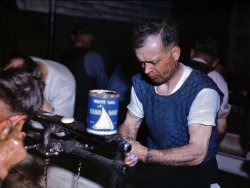
- Stuyvesant Dock Terminal: 1900
- ... you may have. Thanks..
(The Gallery, DPC, New Orleans, Railroads) ... Posted by Dave - 08/14/2012 - 4:01pm -
![Stuyvesant Dock Terminal: 1900 Louisiana circa 1900. "Stuyvesant elevators, docks, R.R. terminal at New Orleans." Detroit Publishing Company glass negative. View full size.
Harrison Line, LiverpoolAccording to a German/Weimar Cigarette card book "Lloyd Reederei-Flaggen der Welt-Handelsflotte" published by the Martin Brinkmann AG Zigarettenfabrik circa 1933, the flag represents the Harrison Line, Liverpool (Charente Steamship Co., Ltd.)
The flag is a red Maltese cross on a white background.
Working in:
England to the West Indies, Gulf ports and Mexico, Brazil, and Africa
Operating:
42 Cargo boats with small cabins
2 Passenger Freighters
Total Tonnage:
239,720
Honoring Mr. FishThe Stuyvesant Dock Terminal was named for Stuyvesant Fish (1851-1923), President of the Illinois Central Railroad, presumably because not even he was happy with the idea of calling it the Fish Dock Terminal. The opening of the terminal was a great leap forward for the New Orleans and Louisiana economies, and it was dedicated with "imposing ceremonies" conducted by Governor Murphy J. Foster and Mayor Walter C. Flower, on November 4, 1896, and with remarks by Mr. Fish on behalf of the railroad company.
According to the New York Times (10-26-1896), "The construction of these docks is the beginning of a great effort that the railroad will make to bring European shipments via [New Orleans] for Chicago, St. Louis, Cincinnati and all Western cities. The wharfage will be absolutely free to all steamers landing at the docks with interior freight for shipment by the Illinois Central Railroad, and such a saving in port charges, it is believed, will bring a great body of traffic this way."
Pristine tracks and locomotiveWhat really stands out to me in this photograph is the pristine condition of the yard tracks and the 0-6-0 that is hard at work. In 1900, stub switches were still in vogue in the South and West, as was unballasted track. The frog switches show that the Illinois Central was dedicated to being a truly modern railroad, as willc's research shows. I'm fascinated by the shiny boiler jacket and controls in the locomotive's cab, I suppose the same crew ran this locomotive daily or the engine terminal really spent some time on cleaning every night. I can assure that my local Canadian National/Illinois Central yard is being switched by a diesel that is no where as clean as this little teakettle!
And in 1905Disaster strikes.
History repeatingThe Stuyvesant Docks were on the Mississippi between Louisiana and Napoleon Avenues, stretching for twelve blocks before they burned in 1905. If you google that area today, you can still see the footprint of the massive railyard and the skeletal remains of the docks which burned again just a few years ago.
Backward CompatibillityThe slot and hole in the knuckle of the switcher's coupler are there to accommodate a link and pin, if a car with the just recently obsoleted (and dangerous) link and pin coupler needs to be moved. You can still see these coupler modifications on a few museum engines.
Dead or AliveThere isn't a man dead or alive who wouldn't jump up and sit on that tender next to the sign "Keep Off" because that's the way we are wired. Gotta love us…
Where in the world?Can anyone identify the flag atop the ship mast? It looks like a Maltese cross, but a quick search turned up no such flag.
Shipping Company House FlagsMost commercial shipping companies had house flags that were flown from the highest mast, at least in port. There were hundreds of designs, only a portion of which were recorded in registers. I didn't find a plausible match online for the flag seen here, but found several similar designs in the 1912 edition of "Lloyd's Book of House Flags and Funnels," a sample from which is seen here to illustrate the idea.
Colorized versionI colorized a major portion of this photo. Please look here and list any comments you may have. Thanks..
(The Gallery, DPC, New Orleans, Railroads)](https://www.shorpy.com/files/images/4a05057a.thumbnail.jpg)
- Pop Start: 1925
- ... just one.
(The Gallery, D.C., Factories, Natl Photo, Railroads) ... Posted by Dave - 05/17/2014 - 11:58pm -
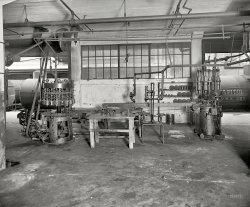
- Glazier Stove: 1901
- ... Glazier Stove!
(The Gallery, DPC, Glazier Stove Works, Railroads) ... Posted by Dave - 10/20/2012 - 10:49am -
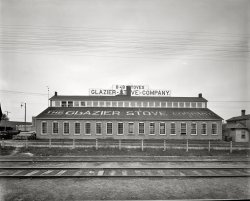
- The Crossing Guard: 1941
- ...
(The Gallery, John Collier, Railroads) ... Posted by Dave - 10/26/2012 - 3:05pm -
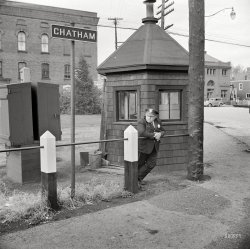
- The Doors of Perception: 1943
- ...
- Aldous Huxley
(The Gallery, Jack Delano, Railroads) ... Posted by Dave - 02/03/2014 - 10:55am -
